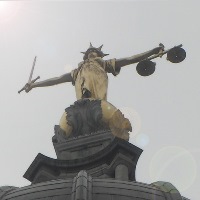 The National Labor Relations Act (NLRA), also known as the Wagner Act, was in enacted in 1935 as a response to employer hostility toward union members and supporters. It gives employees the right to form unions and to join unions. It also requires employers to bargain collectively with unions. The National Labor Relations Board (NLRB) enforces the provisions of the NLRA. The NLRA does not apply to all employees. It does not cover federal, state or local government employees, domestic employees, agricultural employees, employees covered by the Railway Labor Act, supervisors or independent contractors.
The National Labor Relations Act (NLRA), also known as the Wagner Act, was in enacted in 1935 as a response to employer hostility toward union members and supporters. It gives employees the right to form unions and to join unions. It also requires employers to bargain collectively with unions. The National Labor Relations Board (NLRB) enforces the provisions of the NLRA. The NLRA does not apply to all employees. It does not cover federal, state or local government employees, domestic employees, agricultural employees, employees covered by the Railway Labor Act, supervisors or independent contractors.
Under the NLRA employees have the right to organize a union and to negotiate with their employer on terms and conditions of employment. Employees may form, join or assist a labor organization and bargain collectively through representatives of their own choosing. Employees are permitted to engage in other concerted activities for the purpose of collective bargaining, such as striking and picketing. In addition, employees may refrain from joining a union or remaining a member of a union.
In addition the NLRA prohibits employers from certain activities. Employers may not prevent employees from discussing union business or distributing union materials during non-work times. For example, an employee may discuss union business before and after work as well as during breaks. Employers may not prohibit employees from distributing union materials in non-work areas such as parking lots or break rooms. Employers may not question employees about their union activities so as to discourage support of union activities. Furthermore, employers are prohibited from firing, demoting, transferring, or taking any other adverse action against employees because of support for a union. It is also illegal for employers to either discourage or encourage union support by promising or granting pay raises or other benefits. Lastly, employers are not permitted to spy on peaceful union activities.
The NLRA also proscribes certain actions by unions. For example, unions are not permitted to coerce employees to join or support it. Unions cannot refuse to process a grievance as a result of an employee not being a member of the union or because the employee criticized a union official. Furthermore, it is illegal for a union to discriminate against employees because of union-related activity, or take adverse action against an employee who failed to join the union.
The National Labor Relations Board was created by the NLRA to administer and enforce its provisions. Its primary responsibilities include overseeing the process by which employees decide whether to be represented by a union and to prosecute violations of the NLRA. The NLRB has 52 regional and field offices across the country. The NLRB receives over 20,000 charges per year from employees, unions and employers. If upon investigation a charge is supported by sufficient evidence, the NLRB first tries to facilitate a settlement between the parties involved. If a settlement cannot be reached, then the case is referred to a hearing before an NLRB Administrative Law Judge. While the NRLB does not have statutory authority to assess penalties for violations of the NLRA, it can seek temporary injunctions while a charge is being investigated or litigated, as well as “make-whole” remedies such as reinstatement and back-pay for employees who were fired.
If you feel that your rights under the National Labor Relations Act have been violated, contact an attorney with experience representing employees before the National Labor Relations Board. An experienced attorney will understand the details of the NLRA and how to navigate the procedural rules of the NLRB.


